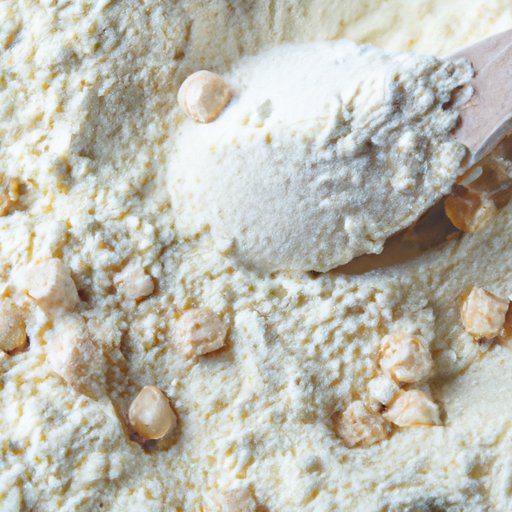
Introduction
As the number of people with gluten sensitivities and allergies grows, so does the demand for gluten-free alternatives in cooking and baking. One such alternative is chickpea flour, which has gained popularity in recent years due to its nutrient-rich profile and gluten-free properties. This article explores the benefits, science, and tips for baking and cooking with chickpea flour.
Benefits of Using Chickpea Flour as a Gluten-Free Alternative
Chickpea flour is a nutritious alternative to wheat flour, offering a variety of health benefits. For example, chickpea flour has a higher protein content than wheat flour, making it an excellent choice for vegetarians and vegans seeking non-animal sources of protein. In addition, chickpea flour contains dietary fiber, which helps support good digestion and a healthy gut microbiome. Finally, chickpea flour has a lower glycemic index than wheat flour, which means it is absorbed more slowly by the body and can help stabilize blood sugar levels.
Several studies have investigated the health benefits of chickpea flour and found that it can play a role in improving heart health, supporting weight loss, and reducing inflammation among other things.
One of the most common concerns related to using chickpea flour is its taste and texture. However, when used correctly in recipes, chickpea flour can produce delicious and satisfying results.
The Science Behind Chickpea Flour and Gluten
Chickpea flour is gluten-free because it is made from ground chickpeas, which do not contain gluten. Gluten is a protein found in wheat, barley, and rye that can cause digestive issues for those with gluten sensitivities or allergies.
Chickpea flour can be used as a substitute for traditional wheat flour in many recipes. It works particularly well in dishes like pakoras or falafels, where the texture of the chickpea flour adds a pleasing crunch.
Studies have found that using chickpea flour as a substitute for wheat flour can result in similar taste and texture profiles in many recipes.
Chickpea Flour vs. Other Gluten-Free Flours
While chickpea flour works great as a gluten-free alternative, there are other gluten-free flours available in the market. Almond and coconut flours are two such popular options. While almond flour is high in healthy fats and protein, coconut flour is high in fiber and low in carbohydrates. Chickpea flour also contains high protein and fiber content, making it a great alternative for those who want to avoid using nut-based flours.
When compared, chickpea flour has a nuttier taste while almond flour is more neutral in taste. Coconut flour has a slightly sweet taste and a light texture. Depending on the recipe and personal preference, one flour may work better than others.
Baking with Chickpea Flour – Tips and Tricks
Baking with chickpea flour can be challenging due to its nutty taste and tendency to dry out or crumble when baked. Here are some quick tips and tricks to help you achieve delicious results:
- Combine chickpea flour with other gluten-free flours to improve the texture.
- Add a binding agent like xanthan gum or ground flaxseed to help hold the dough or batter together.
- Use liquids in the recipe to help combine and add moisture to the chickpea flour mixture.
- Bake at a lower temperature and for a shorter time to prevent over-drying.
Cooking with Chickpea Flour – Recipes and Ideas
Chickpea flour has a long history in Indian and Middle Eastern cuisine and can be used in a variety of savory and sweet recipes. Here are some exciting recipe ideas and suggestions:
- Falafels – crispy and flavorful chickpea balls are perfect with hummus or tahini sauce.
- Pakoras – Indian fritters with vegetables dipped in chickpea flour batter and fried.
- Socca – A simple French flatbread made from chickpea flour, perfect for sandwiches, dips, and spreads.
- Chickpea Flour Omelette – a vegan and gluten-free version of the classic omelette made with chickpea flour, turmeric, and veggies.
- Chickpea Flour Cookies – delicious and nutritious cookies made by replacing wheat flour with chickpea flour and sweetened with maple syrup or honey.
Conclusion
Overall, chickpea flour is a fantastic gluten-free alternative to wheat flour, offering a wide range of health benefits and versatility in cooking and baking. When used appropriately, it can produce delicious and satisfying recipes.





